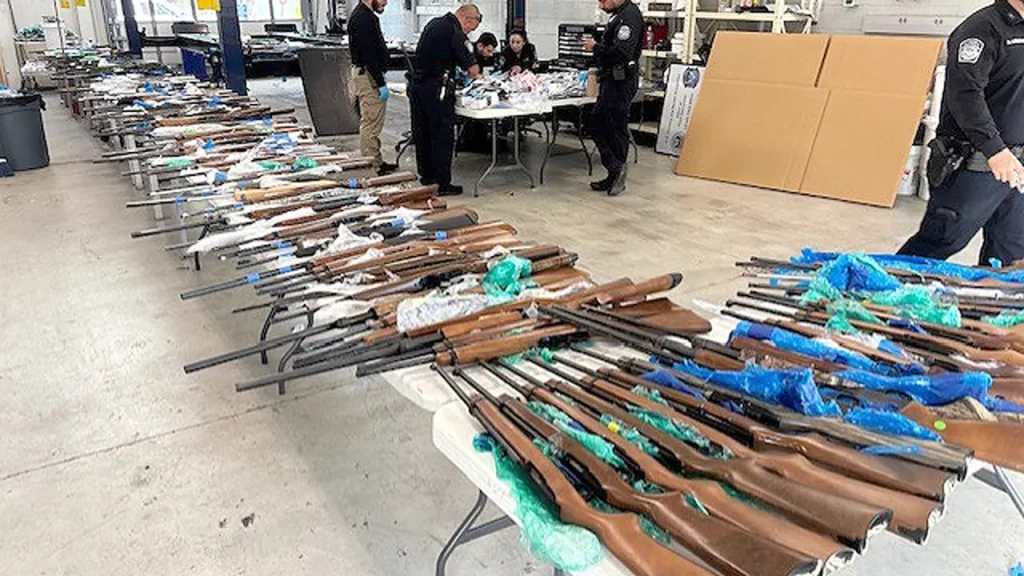Uncovering a Major Weapons Smuggling Operation at the Border
In a significant border security operation in Laredo, Texas, authorities intercepted what appears to be one of the largest weapons smuggling attempts in recent memory. On October 23, a father and son were arrested after Customs and Border Protection officers discovered approximately 400 firearms, high-capacity magazines, and thousands of rounds of ammunition hidden in secret compartments of two trailers attempting to cross into Mexico.
The suspects, identified as Emilio Ramirez-Cortez, a lawful permanent resident, and his son Edgar Ramirez-Diaz, a U.S. citizen, were taken into custody at the Laredo Bridge 2 Port of Entry when CBP officers noticed suspicious irregularities in the walls of the box trailers they were towing. What began as a routine inspection quickly escalated when officers discovered elaborately constructed false compartments within the trailers, meticulously packed with an arsenal that would have undoubtedly fueled cartel violence south of the border. Both men now face federal firearms smuggling charges and have been transferred to the custody of the U.S. Marshals Service while awaiting their initial court appearances.
The discovery highlights the ongoing battle against cross-border weapons trafficking, a trade that significantly contributes to the violence and instability in Mexico. Homeland Security Investigations officials noted that these weapons were destined for Mexican cartels, organizations that have been responsible for escalating violence throughout the country. The operation to halt this weapons transfer came as part of the Department of Homeland Security’s broader efforts to disrupt the flow of weapons, which often move southbound across the border while drugs and migrants flow northward—creating a dangerous cycle that feeds criminal enterprises on both sides of the border.
This weapons seizure represents just one aspect of the complex security challenges facing authorities at the U.S.-Mexico border. The sophisticated concealment methods employed—hidden compartments built into seemingly ordinary trailers—demonstrate the lengths to which smugglers will go to transport contraband across international boundaries. For every successful interception like this one, security experts acknowledge that other attempts likely succeed, contributing to the arsenal of criminal organizations operating in Mexico. The weapons, had they reached their destination, would have significantly enhanced the firepower of cartel groups already engaged in territorial disputes and violent confrontations with rival organizations and Mexican authorities.
The case also underscores the complexity of family involvement in border crimes. The father-son relationship between the suspects adds a troubling dimension to the case, suggesting how criminal enterprises may operate within family networks to avoid detection. Authorities have indicated that the investigation remains active, with the possibility of additional charges or suspects emerging as they continue to unravel the network behind this smuggling operation. ICE officials are likely examining connections to larger trafficking organizations, financial transactions, and previous border crossings by the suspects to determine the full scope of their activities.
As the legal process unfolds for Ramirez-Cortez and Ramirez-Diaz, this case serves as a reminder of the ongoing challenges facing law enforcement agencies working to secure the border. The interception occurred during what the Department of Homeland Security has described as “one of the most violent days” of Operation Midway Blitz, a coordinated enforcement effort targeting criminal activity along the southern border. While this particular operation successfully prevented hundreds of weapons from reaching dangerous hands, it also reveals the persistent nature of cross-border smuggling and the critical importance of vigilance, technology, and cooperation between agencies in detecting and disrupting these activities before they can contribute to violence and instability in the region.


